Creator Burnout Prevention isn’t about grinding harder; it’s about designing a routine and workspace that let your best ideas show up on schedule without draining you.

If you’ve felt the creeping fog—endless tabs, late-night edits, and the nagging fear that the algorithm is leaving you behind—this guide replaces guilt with a plan.
You’ll get a simple, four-week progression that stabilizes energy, rebuilds motivation, and protects your creative pipeline long-term.
- Why Creator Burnout Prevention Starts With Your System, Not Your Willpower
- The Four-Week Reset That Makes Creator Burnout Prevention Stick
- Ergonomics & Eye Care: The Low-Friction Wins of Creator Burnout Prevention
- Psychology & Boundaries: Turning Down the Volume Without Losing Growth
- The Publishing Flywheel: How Creator Burnout Prevention Fuels Consistency
- Early-Warning Dashboard: Catch Trouble Before It Cascades
- Safety-First Studio: Small Controls, Big Confidence
- Your One-Page Plan (Copy/Paste)
Why Creator Burnout Prevention Starts With Your System, Not Your Willpower
When output becomes your identity, every delay feels like failure. That pressure pushes you into emergency mode—skipping meals, stacking late nights, and treating rest like a luxury. The body counters with fatigue and irritability, while your brain starts protecting itself by avoiding hard tasks.
This isn’t a personal flaw; it’s a predictable response to accumulated stressors, cognitive overload, and poor recovery.
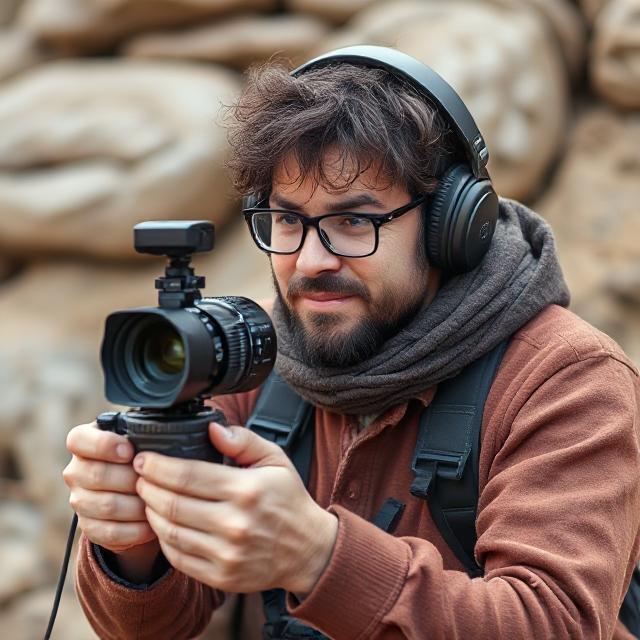
Research on work stress shows that chronic demand without recovery degrades performance and health over time, which is why Creator Burnout Prevention must target the system: clear limits, repeatable workflows, and built-in recovery you actually respect (see foundational guidance from NIOSH on job stress, and stress-coping practices summarized by the American Psychological Association).
An immediate mindset shift helps: treat your channel like a creative small business with operations, quality control, and maintenance. Businesses don’t “motivate” a machine back to life—they service it. The same logic applies to your schedule, gear, and body.
The Four-Week Reset That Makes Creator Burnout Prevention Stick
This month-long plan is realistic because changes are small, visible, and front-loaded with quick wins.
Keep your usual publishing rhythm, but scale the scope if you need to protect energy. Each week builds on the last so habits compound into momentum.

Week 1 — Stabilize Energy and Reduce Decision Debt
Start by cutting cognitive noise. Create a single capture list for tasks and ideas, then limit your daily “must-do” list to three outcomes. Batch notifications into two windows per day and schedule a non-negotiable 30-minute recovery block after lunch.
For your body, introduce two microbreaks in the morning and two in the afternoon—stand, breathe, roll your shoulders, and look 20 feet away for 20 seconds.
This reduces eye strain and relaxes overused postural muscles, giving you more evening energy for life, not just work. If you want a step-by-step routine, bookmark your internal microbreak routine.
Week 2 — Ergonomics and Timeboxing
Adjust your workstation so your eyes land on the top third of the screen, wrists stay neutral, and hips and knees are near 90–100 degrees.
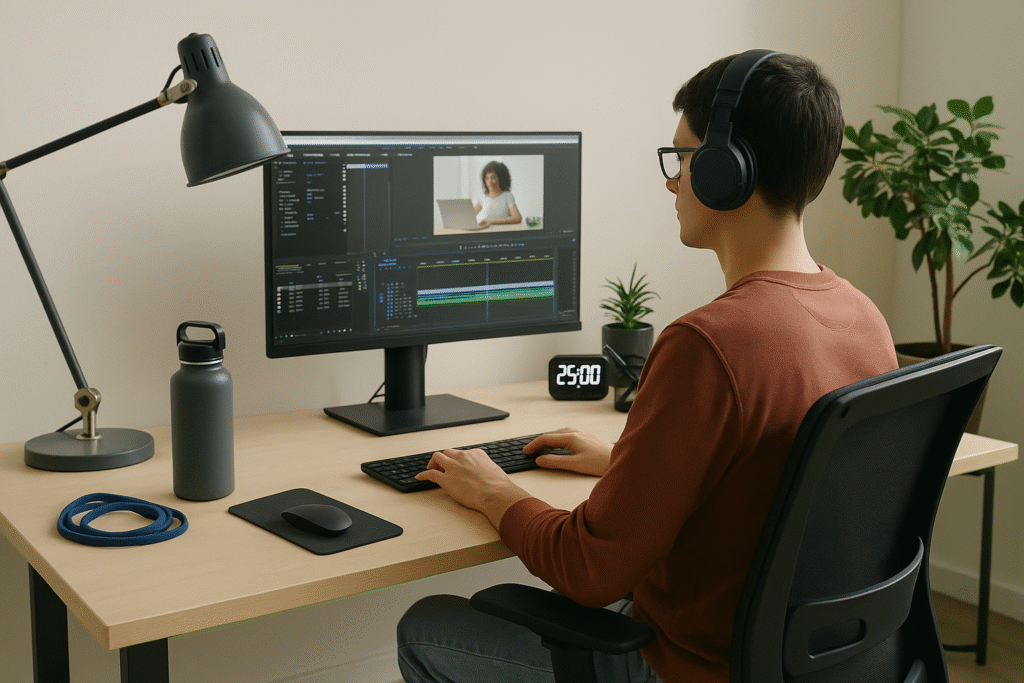
Switch to a sit-stand flow: sit 25 minutes, stand 20, move 5. Then timebox your day—script in a 90-minute block, shoot in a 120-minute block, and edit in two 60-minute blocks with 10-minute resets between.
You’ll be amazed how much “motivation” returns when your environment and calendar reduce friction. For a deeper setup, see our editor ergonomics guide and timeboxing for creators, and compare your tweaks with the workstation principles summarized by OSHA’s Computer Workstations eTool.
Week 3 — Sleep, Circadian Rhythm, and Evening Boundaries
Consistency beats heroic all-nighters. Anchor your wake time, dim lights after sunset, and avoid high-lux key lights two hours before bed.
If late shoots are unavoidable, offset with a wind-down ritual: 10 minutes of gentle mobility, a warm shower, and a strict “no analytics after 9 p.m.” rule.
Quality sleep consolidates learning, stabilizes mood, and restores willpower—exactly what creators need for scripts and creative problem-solving. Practical sleep hygiene tips are well-summarized by the Sleep Foundation. Layer in a quick living-room reset so tomorrow’s start is friction-free: batteries on charge, SD cards cleared, shot list printed.
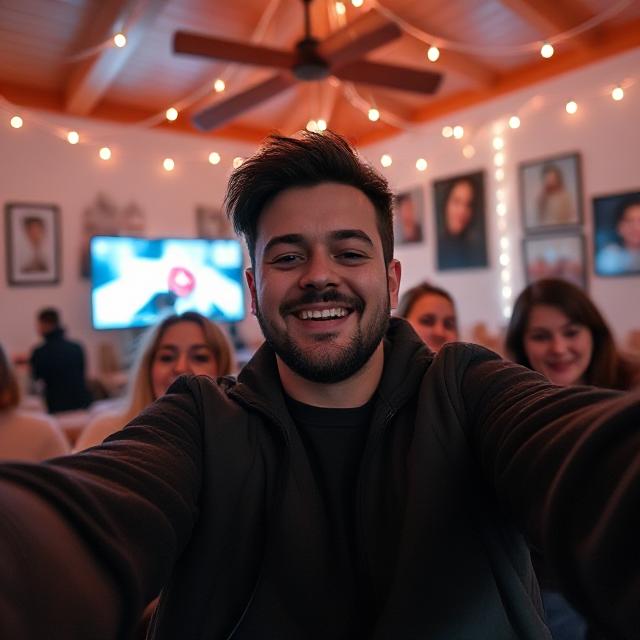
Week 4 — Workload Shaping and Content Cadence
Now compress your pipeline. Replace one “epic” weekly video with two lighter formats (short explainer + behind-the-scenes) or one anchor plus a short. Keep one flex day for research or admin.
Establish a “scope ladder” with three versions of any idea—mini, standard, premium—and match scope to your actual energy, not your ideal mood. This is the moment Creator Burnout Prevention becomes durable: you’re no longer negotiating with yourself at 11 p.m.; you’re choosing from pre-approved, right-sized options.
Ergonomics & Eye Care: The Low-Friction Wins of Creator Burnout Prevention
Physical discomfort quietly steals focus. Raise your monitor to eye level, float your elbows near your torso, and keep the keyboard and mouse close enough that your shoulders stay relaxed.
If you use a pen tablet, alternate with a mouse and add a thicker grip sleeve to vary tendon load. Lighting matters: a soft key at ~45° off-axis and a gentle fill smooth shadows while reducing squinting.

Edit with screen brightness matched to room light and schedule a warm color temperature after dusk to protect melatonin. If glare persists, try a matte screen filter and reposition lights to avoid direct reflections.
For a deeper dive on reducing display strain, map your routine to the 20-20-20 pattern and revisit our lighting guide for creators.
Psychology & Boundaries: Turning Down the Volume Without Losing Growth
Creators often equate availability with opportunity, but unfiltered accessibility feeds stress and rumination.
Set clear response windows for brand emails and DMs; create templates for common replies; and delegate first-pass review of offers where possible.
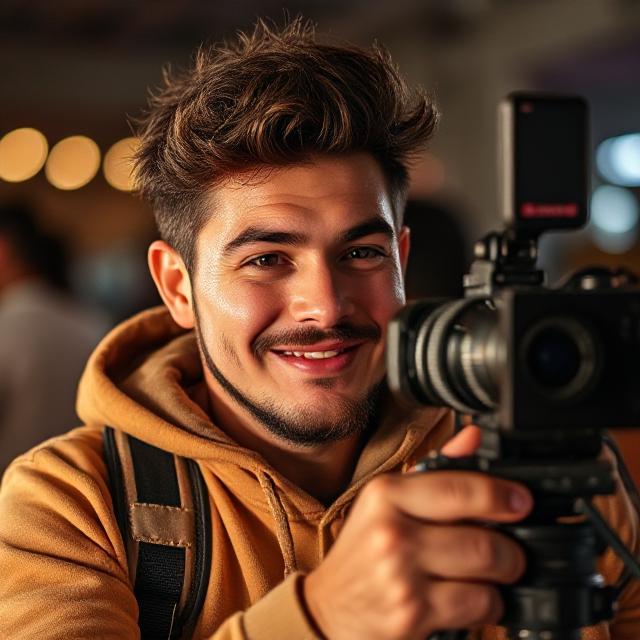
Use comment filters and block lists to reduce exposure to abuse, and remember that moderation is a safety tool, not a moral failing. If you collaborate with editors or assistants, write a one-page “health spec” with core rules: meeting windows, turnaround times, and what counts as urgent.
You’ll protect your team culture and your sleep in the same stroke. For deeper mindset tools and community norms, see psychological safety for creators.
The Publishing Flywheel: How Creator Burnout Prevention Fuels Consistency
Consistency doesn’t require constant intensity; it requires a dependable base. Build a weekly cadence that repeats: one ideation block, one batch-record block, two edit blocks, one admin block, one rest block.
Pre-write your thumbnail concepts and A/B test copy during low-energy hours rather than cannibalizing deep-work time.

Create a “minimum viable episode” checklist that defines done at a realistic level—good audio, clean framing, coherent story, solid thumbnail—so perfectionism doesn’t sprawl. The paradox is powerful: easing off the gas delivers a steadier, more watchable channel.
Early-Warning Dashboard: Catch Trouble Before It Cascades
You can’t manage what you don’t measure. Track three signals each day: sleep hours, perceived stress (0–10), and evening energy (0–10). If two of the three slip for three days, trigger a mini-reset: reduce scope to the “mini” ladder, add a 60-minute walk or light workout, and prioritize one social activity off-camera.
Build guardrails into your calendar: a green band for deep work, a yellow band for meetings, and a red band across late evenings. Creator Burnout Prevention improves not when you fight harder, but when you respond sooner.
Safety-First Studio: Small Controls, Big Confidence
Tidy cables, grounded power strips, and clear walkways lower background stress and accident risk. Store lithium batteries in a cool place, never daisy-chain strips, and keep an ABC extinguisher near the door.
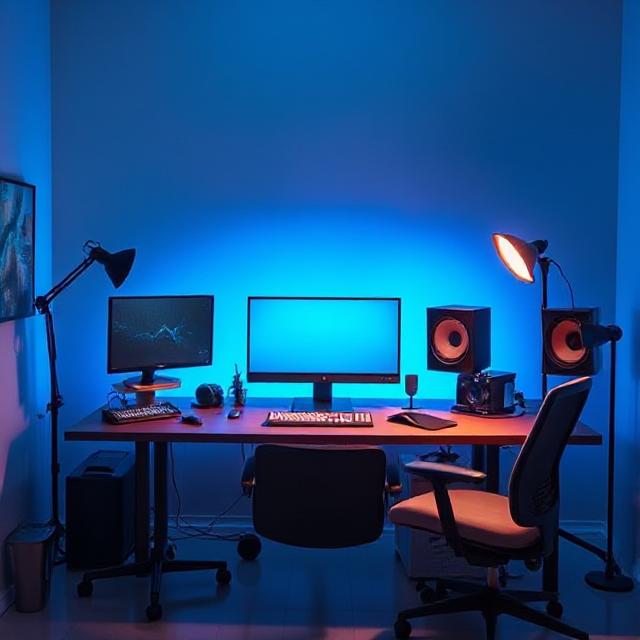
If your content involves adhesives, aerosols, sanding, or fog machines, improve ventilation and choose the right PPE; a basic safety checklist posted by your gear shelf prevents rushed mistakes.
For general workstation controls, cross-reference your setup with the layout and reach-zone ideas in OSHA’s workstation guidance and continue building your own safe studio checklist.
Your One-Page Plan (Copy/Paste)
- Daily: two morning and two afternoon microbreaks; one 30-minute recovery block; analytics only during scheduled windows.
- Weekly: one batch filming day; two edit blocks; one admin block; one rest block with an off-camera activity.
- Monthly: review your scope ladder, adjust cadence, and prune commitments that no longer serve your goals.
Post this plan by your desk, and schedule your resets with the same respect you give uploads. That single act often flips creators from “always behind” to “in control.”
The Takeaway
You don’t need a new personality to recover your spark—you need a safer system. Creator Burnout Prevention works when your workflow trims decisions, your studio reduces strain, your schedule honors sleep, and your publishing cadence matches real energy.
Follow the four-week reset, use your scope ladder honestly, and defend boundaries that protect rest and relationships.
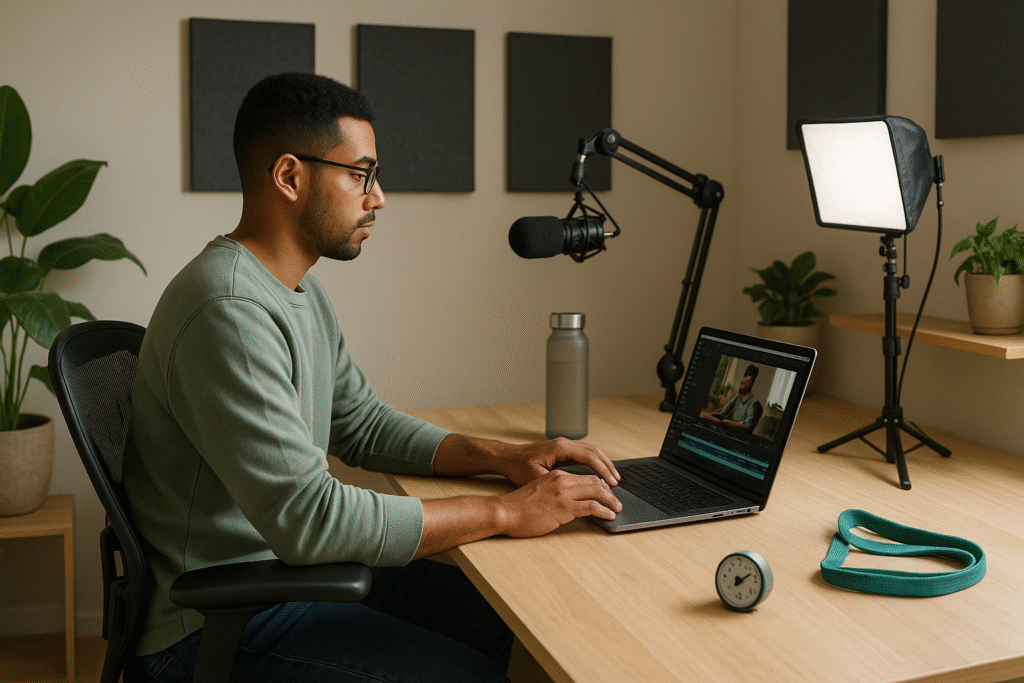
Do this for one month and you’ll notice fewer false starts, cleaner edits, and steadier growth—proof that sustainable creation isn’t soft; it’s strategic.

No comments yet